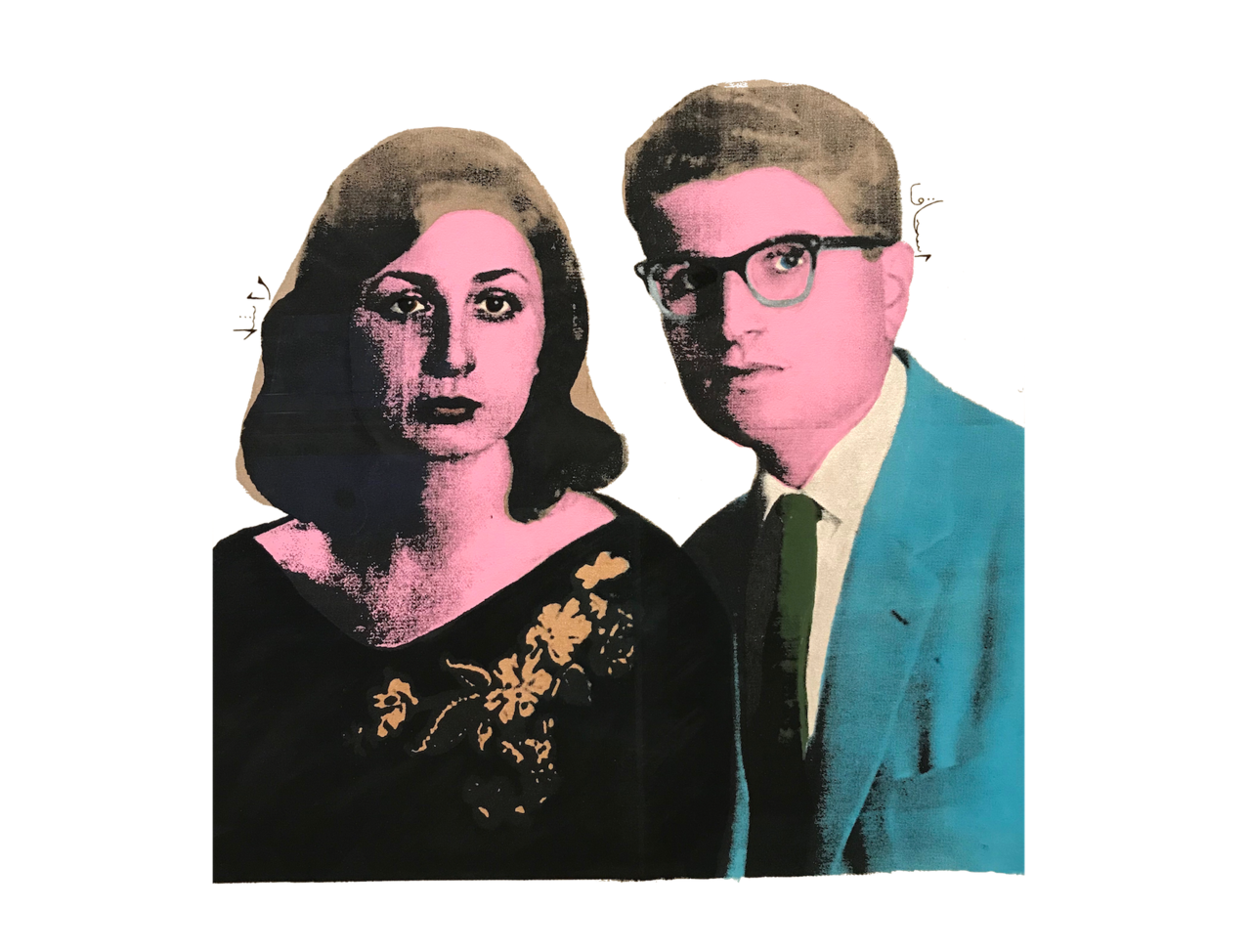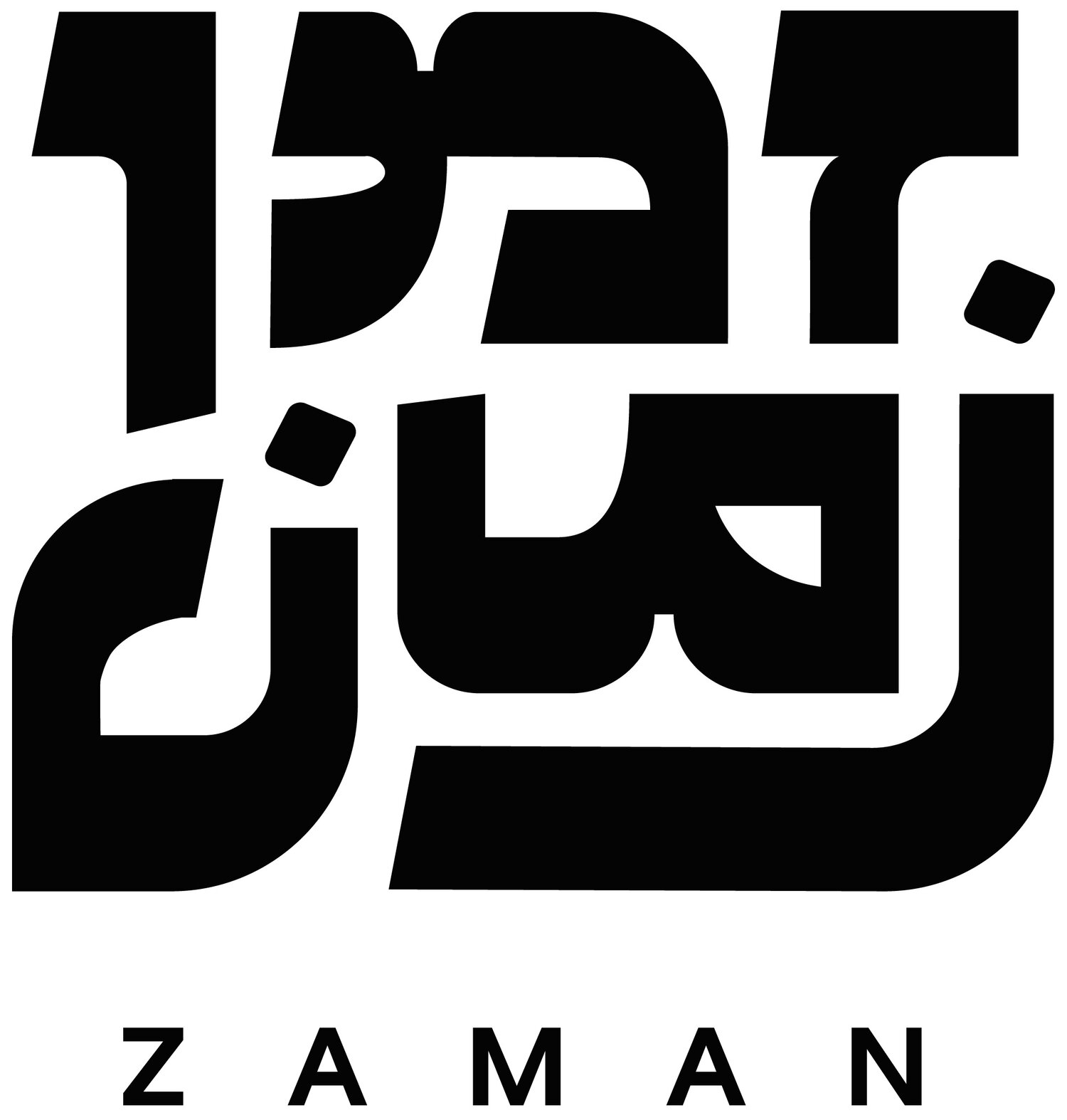
Khoda Hafez / خداحافظ
Completed between December 2017 and May 2018, this painting draws upon traditional portraits of female dancers and musicians in Qajar-era Iran while also incorporating a lush vocabulary of symbolism. Levy patches together a pulsating landscape of naturalistic biblical Jewish motifs, images drawn from memory, and references to her personal life.

Old Middle East / מזרח תיכון ישן
This series of prints and etchings draws upon representations of “blessing” in Judaism, exploring biblical imagery, traditional mystical beliefs, and facets of religious practice. The work also serves as a sociocultural commentary on male sexuality and interaction in a Mizrahi-Sephardi Israeli context.

Calling In
A comic about mental health stigmas in the Persian Jewish community, as discussed over Dr. Holakouee’s radio show in my grandma’s car.

Mahin (Diptych)
This diptych arguably transcends the role of the family portrait as it comments on the place of Iranian Jewish women in a broader national culture largely built on Islamic history, lore, and spirituality. The prints’ pop-art flair also serves to ironically question flattening, simplistic understandings of Jewish acculturation into Muslim Iran. Rather than accepting the inherent complexity and nuance of Persian Jewish sociocultural history, it can be easy to view the existence of Jewish life in Iran as “incompatible” with its backdrop of national history dominated by Shi’a Muslim influence.

1986
There were no portraits of pedestrians shrouded in light, no Israeli street scenes- only brooding, simple, intense images of household objects against pitch black backgrounds. There were bags of fresh herbs, plates of half-eaten tokhmemorgh shabbati, and CDs with Persian titles written on them in Sharpie, captured in rich detail yet simultaneously pervaded with a sense of otherworldly abstraction. The objects existed as isolated, timeless forms seemingly removed from any natural setting.

Focusing a New Lens on Mizrahiut
“What exactly are you trying to capture? Which community? There just isn’t such a thing as Mizrahi,” my interviewee told me shortly. He had a point; what on earth was I trying to document? When I asked my interviewees to point me toward what they considered to be Mizrahi, I was told repeatedly to “go to the periphery.”

Pottery Series 01
Evan Mateen approached pottery as a new medium in an effort to expand his vocabulary in traditional Iranian art forms, combining imagery from talismans and miniatures with excerpts of classical Persian poems. The following is a selection of vessels and clayware he made during his first two years at Harvard College.

“Yadet Miad?” - Recollections of Jewish Life in Iran
This series of graphite illustrations on paper combines images and text from a wide range of sources to pose and address the question: “what does it feel like to remember a place you have never been?” As an American-born descendant of Persian Jews barred from entering Iran following the 1979 Islamic Revolution, Levy incorporates images and words drawn from family photos, state-issued documents, Persian ketubbot (Jewish marriage contracts), post-revolutionary Iranian photography, album covers, and visual representations of memories her family has recalled over the years.

RAQÍA
An excerpt of a zine by Mika Benesh about his grandfather Shlomo's memories of his childhood in Baghdad - discussing what he remembers and why his Jewish family left.
Screenprint Series 01
Some photographs are easily dateable based off simple clothing, orientation, and film markers. But among these lurk photographs that, when taken out of context, seem to possess an ambiguous sense of timelessness and nostalgia. By experimenting with different combinations of ink color, image scale, and resolution in the screenprints I make, I am hoping to bring new life, perspective, and accessibility to the past.
